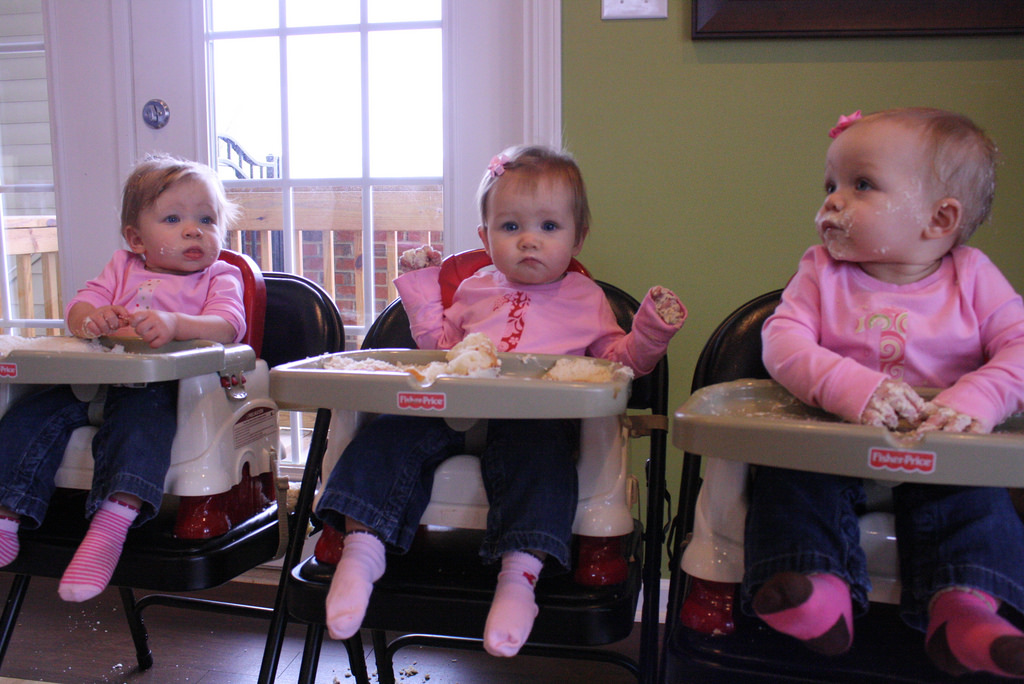Nature, Nurture, and Unknown Harms
In Three Identical Strangers, we learn of a set of triplets that was separated when they were 6 months old and discovered each other at 19. Robert Shafran, Edward Galland, and David Kellman were excited to find each other and made instant connections. However, they found their separation was part of a confidential experiment.
Studies of monozygotic siblings are very special in psychological research, as they hold the potential for isolating the impact of “nature” versus “nurture”.
In 2016, twins offered a unique chance to see the difference gravity and radiation may have on the human body. Scott Kelly is an astronaut who took part in NASA’s “Year in Space” project, and because he had an identical twin, provided an opportunity for scientists to observe the effects of prolonged time in space. After returning to earth, the twins underwent medical tests and examinations to check for differences that Scott may have developed by spending 340 days in the International Space Station.
Currently, over 100 countries worldwide are conducting studies on twins. Many have registries of twins born so that longitudinal studies of their ongoing health, personalities, and other traits can be tracked. Twins studies have concluded that the impact of growing up poor can be more significant than heritable traits (using the UK twins registry), that eating disorders are among the mental illnesses that have a genetic component (along with schizophrenia and bipolar disorder), and the amount of weight gained on the same diet seems to have some inherited factors.
Perhaps the most famous twins study was directed by the Minnesota Center for Twin and Family Research. Conducted from 1979-1999, the study focused on twins reared apart and found that they nevertheless tended to have similar personalities, interests, and attitudes.
A key difference between the Minnesota Twins Studies and the way the triplet’s story is presented in Three Identical Strangers is the manner in which the infants’ separation and the study is related. The triplets were separated intentionally so that they could be studied. This leaves them feeling “like lab rats” as adults, and as more details of the manipulation of their lives are revealed, their indignation rises.
Each infant was adopted by a family specially chosen so that they would have a different upbringing. Placed in a blue collar, middle class, and affluent family, the different parenting relationships were meant to create environments that would present key factors for studying “nature” versus “nurture” influences. Their life circumstances were constructed for ideal study purposes.
Before the revelation of the study, the adoption agency at first defended their separation of the triplets because of the anticipated difficulty in placing three infants in one home. Such reasoning has been used in some of the cases where twins are reared apart in the Minnesota Twins Studies, along with other life circumstances. These circumstances are unfortunate, just as non-twin siblings that are separated during an adoption process are substantially unfortunate.
The intention of the adoption agency to separate Bobby, Eddie, and David for the purposes of studying their development in different environments is what seems to make it especially morally problematic. The boys themselves weren’t too bothered about the potential mistake that may have been made until details of the study began to surface.
If they never found out about the study, would they still be considered morally harmed? This question is particularly pertinent, as conductors in the study have confessed that not all separated twins have been revealed. They consider it an open question whether it is in the subjects best interests to be told about their separation and the study.
The study on the triplets has some relevant connections to another, fictional, story of adoption and deception – the film The Truman Show. In the film, an infant, Truman, was adopted by a corporation and raised in a maximally manipulated environment: he was surrounded by actors who played the roles of his parents, teachers, friends, neighbors, and colleagues. The scenario was a grand social experiment and broadcast 24/7 on television. If Truman never found out his was part of the experiment, he would have considered himself to have lived a relatively normal life.
The harm done to him by manipulating his environment is one not of damaging his lived experience, but of treating him as an appropriate object of such manipulation. In other words, to take such power and control over another person’s life is to treat them as less than human. As David’s Aunt Hedy says in Three Identical Strangers, that this treatment is evil is the fundamental and indelible lesson of the Holocaust.
There is an interesting twist on the question of whether or how morally wrong the adoption agency’s separating siblings without the family’s knowledge was. If we presume that the separated triplets, or twins that still don’t know their full origin story, were to always be kept in the dark about the nature of the experiment, they wouldn’t stuffer the feeling of manipulation and living a life as a lab rat. In that case, we may think that they had a chance at a fulfilling life just as any other adopted children. However, in at least two of the triplet’s stories, we learn of how disconsolate they were alone in their cribs, banging their heads against the wall, and in the case of one triplet, holding his breath until he passed out.
The triplets, having been cared for for six months together, were separated at a crucial developmental stage for attachment. This brings out a manner in which you can be wronged without being aware of it. It’s possible their emotional health through development was damaged by this separation. If such a thing could have been avoided, the agency should have looked into this possibility. Instead, it pursued the potential reward of research. (No results of the study have been forthcoming; it is unclear that significant or conclusive results were obtained).
It is difficult to say what to do with the unknown twins still out there. Perhaps because it is so difficult to imagine being in their shoes and what you would want. The triplets found each other at 19 and were able to share much of their adult life together. As the decades pass, the significance of long lost siblings may alter in tone. The knowledge that your life was manipulated for the purposes of experimentation may be something you have a right to know, or something that you could deserve to be protected from, at this point. Comparing these harms and benefits to similar cases can be fruitful, but fortunately these circumstances are rare. Unfortunately, this leaves it possible for many reasonable people to disagree about what to do going forward. More clear is the need to conform to standards in biomedical ethics on experimentation on humans, which were thoroughly flouted in this case, leaving difficult questions in its wake.





